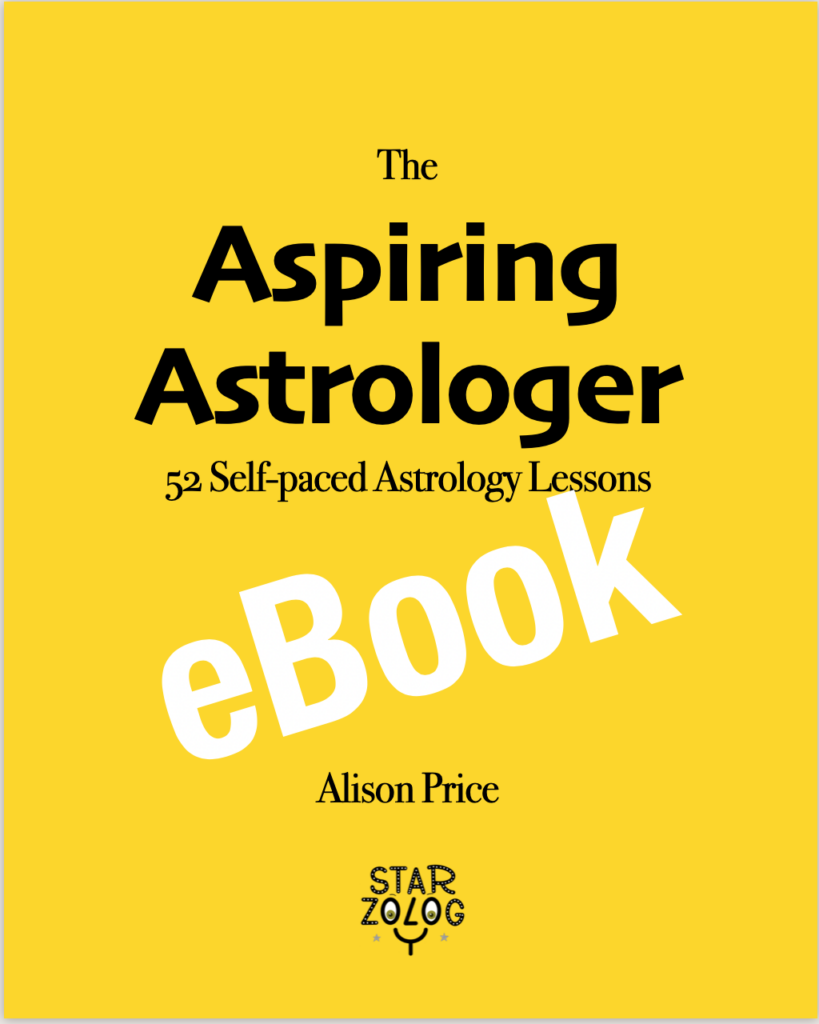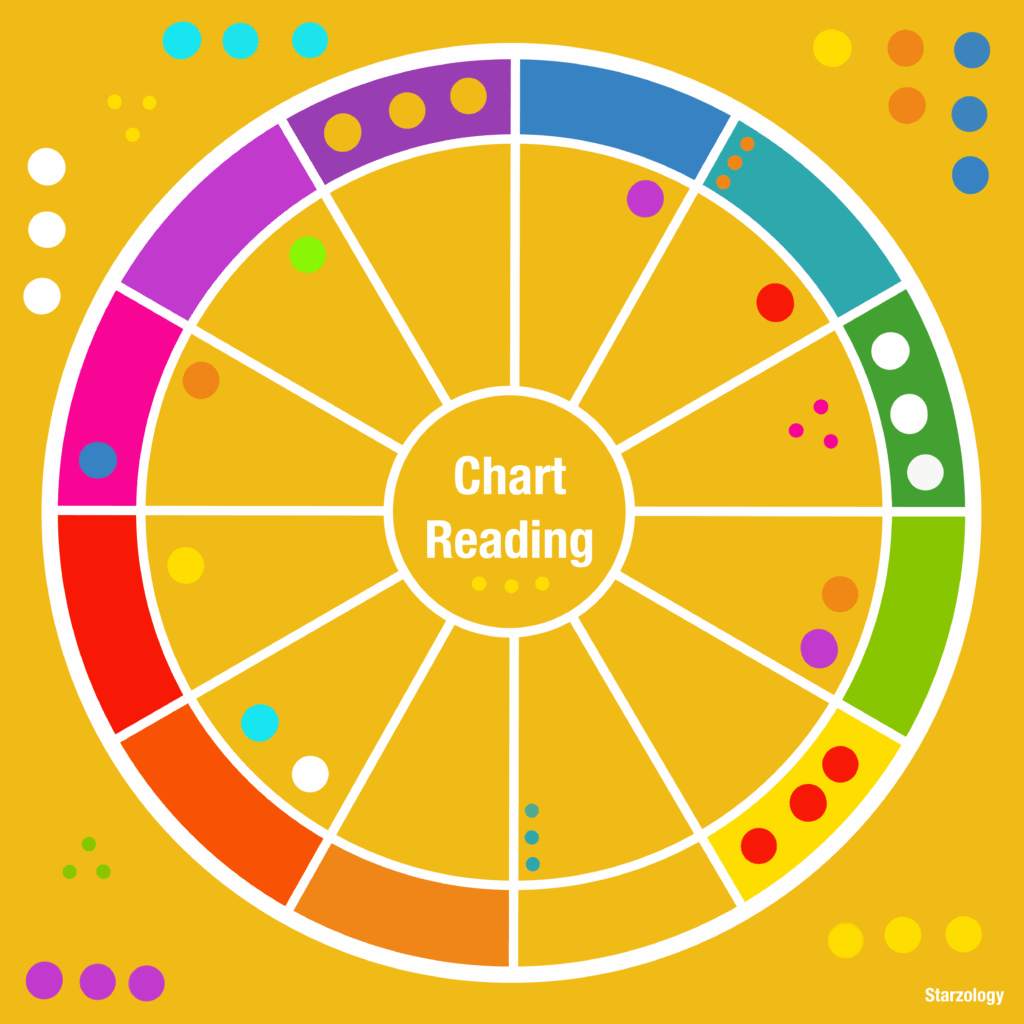The Starzology monthly horoscope overview provides all the ingresses, stations and lunations for each month with a short interpretation.

International Astrology Day
Author: Alison Price – Published: February 2024
International Astrology Day
Chart for 2024
Chart Details
This chart is set for the moment that the Sun enters Aries in 2024. 8:10pm, March 19th, 2024, in Vancouver. I’m using the Zero Aries house system so the chart is relevant for everywhere around the world.
Solar Cycle
Zero Aries
This day is a part of the solar cycle which is the path of the Sun every year. It is marked as the Sun crosses the celestial equator heading north which is when it enters Aries.
Equinox: Ostara
It is the equinox as well. In the Wheel of the Year this day is the festival of Ostara.
Chart Shape
Bowl Chart Shape
This chart is a loose bowl shape where all the planets are on one side of the chart. Frequently, the leading and trailing planets are in opposition. That the Moon is slightly out of the exact 180° shows that this is not technical a bowl, but for me it’s close enough.
Leading/Cutting Planet
The leading or cutting planet is Pluto in Aquarius. Pluto will rise ahead of all the other planets on this day and they will trail behind it as they rise over the horizon.
Trailing Planet
The trailing planet is the Moon in Leo.
Rim Opposition
The Moon is in opposition aspect to Pluto. This creates what is called a rim opposition. The idea is that they for the rim of the bowl.

Conjunctions
Sun Conjoined Neptune
The Sun is conjoined Neptune which is in dignity in Pisces. Here Neptune is at the tail end of Pisces but still strong in rulership. This is a disassociate aspects as the Sun is in the active fire sign of Aries and Neptune is in the passive water sign of Pisces.
Venus Conjoined Saturn
Venus is conjoined Saturn in Pisces. Venus is also parallel Saturn so that makes is a powerful “double whammy” conjunction and one not to be ignored.
More on Aspects of Declination.
Jupiter Conjoined Uranus
Jupiter is conjoined Uranus in Taurus. Jupiter is applying to Uranus and this means that the aspects is not yet exact but it is going to be exact later in the year as Jupiter moves towards Uranus.
Sun Complex
Ingress Chart
In an ingress chart, like this one, the Sun is the main player and its complex of sign, house, position, rulership and aspects is crucial to understanding the chart. An ingress chart is a chart set for the exact moment a planet enters a new sign or house. Typically, you look at solar ingresses for global interpretations. However, all planetary ingresses can be valuable to determine the energy shifts and expression of the period.
Sun Sign
The Sun is in Aries.
Sun Rules
The Sun disposes the Moon in Leo.
Sun Aspects
Neutral Aspects
The Sun is conjoined Neptune which is in dignity in Pisces.
Soft Aspects
The Sun is trine the Moon in Leo in the First Quarter phase. The Sun is sextile Pluto in Aquarius.
Major Aspect Pattern: Stellium
Stellium Planets
A stellium forms when three or more planets are within 8° of each other. The three planets in this chart’s stellium are Mercury, Chiron and Eris all in Aries. As the ruler of Aries the planet Mars disposes this stellium.
Major Aspect Pattern: Quintile Pointer
Quintile Pointer
There is a major aspect pattern of a fat quintile pointer with the three planets Moon, Venus and Uranus.
Quintile pointers only contain aspects of the fifth harmonic (when you divide the chart by 5). There are two aspects which are the quintile at 72° and the biquintile at 144°. Quintile pointers can be fat or thin it depends. The energy from the base planets (in this case the Moon and Venus) will flow towards the point or the focal planet Uranus and will be expressed out into the world at 20° Taurus. If you have planets or points at this position it will affect you more.
Focal Planet
Uranus in Taurus is the focal planet. Note that Uranus is disposed by Venus the ruler of Taurus. I would also consider that Venus is conjoined Saturn, and that Uranus is conjoined Jupiter when interpreting this quintile pointer.
Author Bio
Alison Price: Professional Astrologer
Alison helps you uncover your individual creativity and lead a fulfilling life using your own astrology. She shares her wisdom from the heart with a touch of humor. She offers Consultations for everyone and Coaching for Aspiring Astrologers.
If you’d like to get in touch with Alison, you can reach out to her via email at starzology@gmail.com.
More Articles
If you enjoyed this post, you may like some more astrology related articles from our blog.

This Month’s Horoscope Overview

Pluto Aspects
In astrology, PLUTO and his aspects can indicate where serious transformations will occur in your life.Make sure to explore this planet.

This Month’s Horoscope Overview
The Starzology monthly horoscope overview provides all the ingresses, stations and lunations for each month with a short interpretation.

Saturn Conjoined Neptune
In astrology, a new synodic cycle begins as two planets conjoin. This almost happens for SATURN and NEPTUNE in 2025 and will be exact in 2026.

Online Course (Coming Soon)
Online Astrology Course is for people who do know a little astrology and you have a grasp of the chart at a basic level and know the glyphs.











